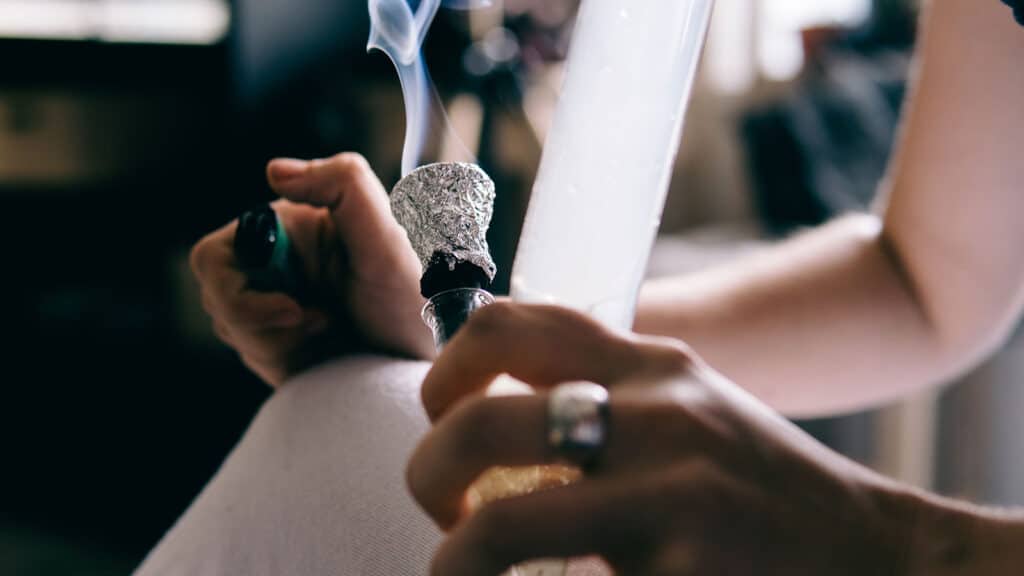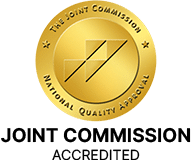Meth bongs are equipment used to smoke methamphetamines or, for short, meth. The drug paraphernalia is one of the several ways to identify meth abuse.
The glass contraption gives users a larger dose of meth than standard meth pipes. Subsequently, they pose a more dangerous risk of developing meth mouth, addiction, and lung damage.
That said, meth is an addictive substance with multiple counts of abuse in the U.S. Due to its availability and cheapness, users target it for its quick and easy high. Stick around to learn more about meth bongs and the dangers they can inflict.

Table of Contents
About Meth Bongs
Meth bongs are among one of the many paraphernalia used when smoking meth. It’s a telltale sign of drug abuse. The bong resembles other drug equipment, such as Cannabis bongs.
The meth bong consists of a bowl where the drugs are present. Bong water is also added inside the bowl to ease the consumption of meth. The stem connects to the bowl. The user inhales and smokes the meth from the other side of the stem, which has a tube connected.
The drug equipment is around 8 to 12 inches long. Water glass bongs are usually available in smoke shops. Nevertheless, some users opt for one-liter plastic water or soda bottles. Paraphernalia producers developed silicone bongs as a way to prevent breakage.
Meth Bongs: Dangers and Risks
Meth bongs exacerbate drug addictions due to their more potent intake. The drug is highly tolerable, making users revert to it more often.
Crystal meth can cause multiple physical issues ranging from strokes to organ failure. Here are some other physical risks associated with meth.
Meth Mouth
Meth notoriously damages your teeth. It causes your gums to dry out since the drug hinders your saliva flow. Additionally, users often clench their teeth due to the paranoia associated with the drug.
Grinding your teeth will only worsen your teeth’s condition after experiencing other tooth decay symptoms from the drug. Users’ teeth will end up black-stained and have a decaying gum line.
Lung Complications
Smoking ice constricts blood vessels. Consequently, it negatively affects how and where the blood flows to and from your lungs.
The chemical fumes inhaled are toxic and cause more lung damage. Continuous meth smoking can lead to irreversible lung issues and infections such as pneumonia.

Heart Issues
Meth charges your nervous system and allows your brain to send signals to the heart to beat faster. The drug narrows your blood vessels, weakens heart muscles, and causes high blood pressure.
One of the risks of meth to your heart health is that it can induce a spasm in the coronary arteries. The latter pumps blood to your heart muscles, and a spasm will likely trigger a heart attack. Meth use increases your likelihood of heart disease by over 27.5%.
Digestive Issues
Due to the harsh chemicals ingested, the meth user’s digestive system will likely try to eradicate these toxic elements from their body. In turn, they’ll experience diarrhea, stomach pain, and other digestive complications.
One of these issues includes intestinal ischemia. It occurs when your intestines receive little blood supply due to blood vessel constrictions. Subsequently, the organ doesn’t function well, and users typically experience cramping.
Kidney Problems
The reduced blood flow to the kidneys from drug use can cause renal tubular necrosis. The complication can lead to acute or sudden kidney failure.
Another nephrotoxic effect of meth is acute interstitial nephritis. It’s a disease that harms the kidney’s tubules, which affects the organ’s capacity to filter waste. Kidney failure for meth users can either be chronic and long-term or acute and sudden.
Skin Complications
Not only does meth affect your internal organs, but its harmful effects can also be seen on your skin after prolonged use. The skin damage can be both direct and indirect.
In the prior’s case, when meth users hallucinate, they tend to imagine bugs crawling on their skin. Consequently, they rub and itch at their skin, irritating.
The itching is frequent during the “tweaking” phase. The phase occurs when users experience frantic behavior.
Meanwhile, meth can indirectly harm your skin due to the lack of nutrients you’re receiving from a suppressed appetite. On top of a poor diet, users tend to neglect their hygiene.

Signs of Meth Bong Abuse
If you suspect someone is struggling with meth addiction, you can use these signs to confirm your suspicions.
Acute Energy
Sudden bursts of energy and action are typical signs of meth abuse. The drug could cause its user to move excessively and engage in redundant activities.
After coming down from a high, users often enter a deep sleep. Post-high leads to severe energy depletion, where you may only wake up to go to the bathroom.
Weight Loss
Increased meth intake often decreases its user’s appetite, leading to noticeable weight loss. Some users forget to eat as well. The drug increases your body’s metabolism and burns more energy faster.
Mental Instability
You can single out meth users from their behavior. Signs of their instability can include hallucinations, memory loss, paranoia, aggression, and isolation.
Meth addicts usually develop a high tolerance for the drug. They use meth bongs to increase the drug’s potency and achieve the same euphoria. The long-term psychological effects of the drug can range from depression to insomnia and, in severe cases, psychosis.
Another mental aspect associated with meth users is mood swings. They may feel happy and excited at one point and quickly switch to anger and violent tendencies.

To Conclude
5% of the adult population in the U.S. used meth at least once in their lifetime. It accumulates to about 12.3 million people. Close to half a million people in the country consume meth weekly.
The drug issue worsens as paraphernalia like meth bongs are more widely available to the public and induce stronger effects.
Fortunately, government action has provided the public with safe smoking kits and test kits to reduce the dangers of using meth.
Published on: 2023-02-26
Updated on: 2025-05-05



